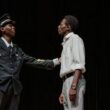Author: Sultan F. Somjee
Publisher: Amazon, 2020
One Who Dreams is Called a Prophet (2020) portrays the diversity of Kenya’s Indigenous peace heritages in the author’s fictionalized memoir. Ngũgĩ wa Thiong’o launched the 614-page book on November 25th, remarking “prophets are very conscious and connected to the land and environment.” The story takes the form of a walk of a pastoralist seeking one of humankind’s most sought-after ideals, the search for peace, especially relevant now during the times of internal and external conflicts. The protagonist, Alama, (Somjee’s alter ego) sets out to explore Utu, an African humanist philosophy. Utu comes from the Swahili word meaning ‘being mtu’ or simply ‘being human.’ It stands for a set of traditional African values that connect the spiritual realm, the community, ancestors and nature in reciprocal relationships of respect. In South Africa, Ubuntu can be translated into many African languages bringing the meaning home. At the launch, the Kenyan writer, Ngũgĩ, spoke about the concept of Ūmūndū in his mother tongue, Gĩkũyũ. Somjee intricately weaves together African peace metaphors and even satirical messages through the storytelling of Indigenous voices.
Sultan Somjee, an ethnographer, writer and artist, introduced Indigenous aesthetics through material culture into the Kenyan school curriculum (1985-1990). While working as the Head of Ethnography at the National Museums of Kenya, he began a study with his research assistants and Elders about Indigenous peace heritages. Later, with seed money from the Mennonite Central Committee, he initiated sixteen rural-based museums between 1994 – 2003 under the umbrella of the Community Peace Museum Heritage Foundation (CPMHF). The village peace museums highlight Indigenous languages, material culture and the arts used over generations for reconciliation and social cohesion. Today, the peace museums have spread from Kenya to Uganda and South Sudan as a grassroots civil society movement. In 2001, the United Nations named Somjee one among the only twelve ‘Unsung Heroes of Dialogue Among Civilizations’ worldwide in recognition of his work. In 2002, Somjee joined the Global Advisory Board of Human Dignity and Humiliation Studies.
In a troubled world of violent reprisals, the author leads the reader into the Indigenous world of Utu’s African humanist philosophy. In July 2018, I began travelling across Kenya with Somjee’s early manuscript in my hands, in hopes of understanding what peace is from a cultural perspective. The book’s main character, Alama, is a Turkana Elder who sets out on a walk from Kataka (Lokichar in North East, Kenya), searching for the source of peace. Along the way, he meets Elders who exchange peace staves, stories, proverbs and songs. He also witnesses conflicts in Tamba (Wamba), Babati (Kibera), Popote (Kariobangi) and encounters refugee camps reminiscent of British Colonial internment villages during the Mau Mau (1950-1960) and a matatu massacre. Underfoot, Alama continues walking the path of his ancestors but feels the heaviness of fear of the enemy hanging in the air when crossing ethnic borders.
Like Alama, my experiences of travelling by matatu in northern Kenya during the 2018 primary elections were fraught with bloodshed on the roads. Conflict zones escalated when ethnic groups became divided when siding with political parties that align with cultural allegiances. Alama encounters similar experiences and is weighed down with finding the source of peace. In Arisa (Garissa), he meets Dr. Richard at an NGO’s peacemaking workshop and experiences the Western concept of Liberal Peace practices, which have no connection to his ancestral heritage.
Along my journey, we read the book in Talking Circles with Elders, CPMHF curators and community members who responded with proverbs, parables and riddles about what peace meant to them. I carried out the CPMHF methodology that Somjee attributes to the famed Kenyan theatre at Kamirithu (1977), of “connecting ourselves to the people” (Ngũgĩ wa Thiong’o, November 25, 2020). During the Talking Circles, I learned to embrace the concept of reconciliation through a holistic lens of Utu that includes the Supreme Being, Ancestors, Elders, the Community and Nature.
Somjee offers a rare insight into Indigenous Peoples’ narratives, aspirations, and heritage value in making a contemporary culture-based civil society in rural eastern Africa. The reader’s journey invites contemplation on Alama’s encounters that include facing humiliation and thoughts of revenge. Both require a persistent commitment, individually and communally, to search for peace to end the misrule of the ruling classcalled Matumbo Hayashibi (insatiable stomachs). Above all, One Who Dreams is Called a Prophet instills within us to carry the dream of peace by walking the path to the full realization of what it means to live as human beings and passing on the dream to the younger generation in a country divided by violent reprisals, especially during the election times.





